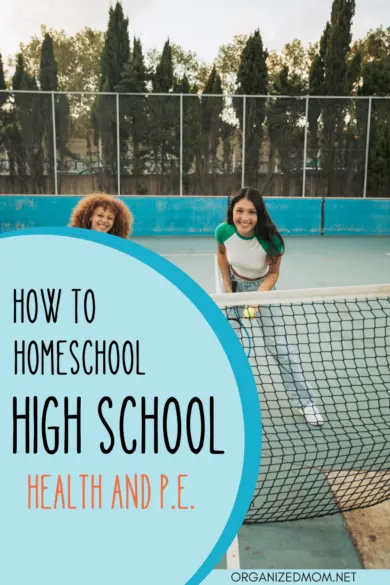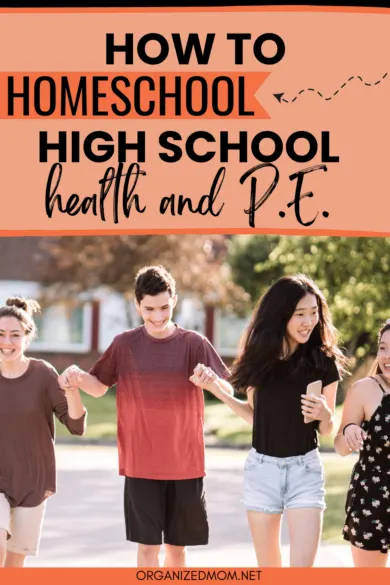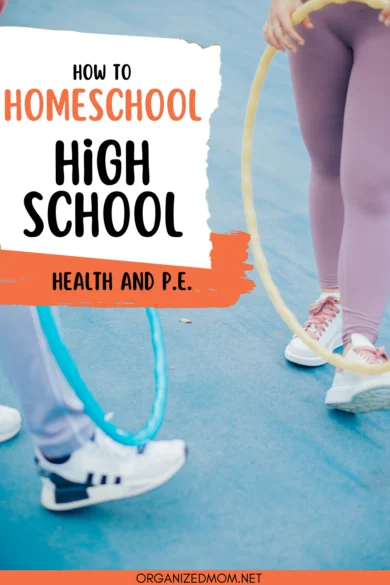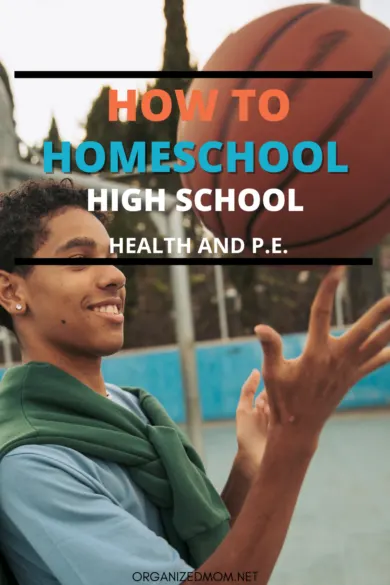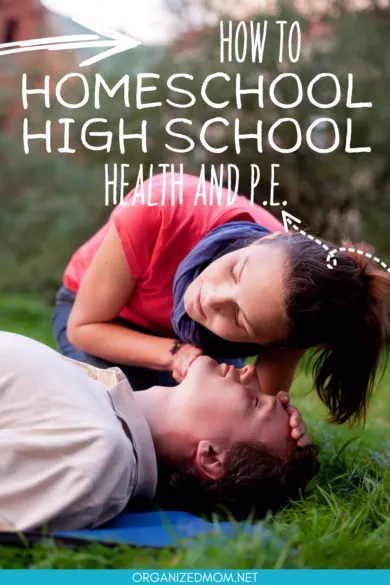Physical education lessons serve two functions; they improve overall body health and can help homeschoolers qualify for high school credits. Teaching PE and health to homeschoolers is easy for active parents because they can incorporate these physical activities into their routines. Other parents follow the curriculum as a guide when homeschooling PE and health. Always work with your child’s needs when teaching high school PE. Each child is different and their approach to physical exercises also differs. There are no specific laid-down procedures on how to do this. Follow your state’s guidelines on how to offer credit and wing it as you go. Here are some tips for homeschooling health and PE.
What are your state’s requirements?
Different states have different requirements for high school. These requirements play a huge role in how you will structure your lessons. You have the flexibility to teach as you wish but you must meet these requirements. Find out what is required of you from your state’s education center and plan your course appropriately.
Choose an appropriate curriculum
You have a lot of say in this. You can buy a curriculum or create your own. Whichever way you go, ensure that it aligns with your homeschooling goals and your state’s requirements. Choosing a curriculum can be challenging for many parents. Be guided by your child’s learning style and your teaching capability when choosing a Health and PE homeschooling curriculum.
For instance, the Health and PE curriculum for a child with special needs may be significantly different from a mainstream curriculum. You should find something that works for your child.
Find a variety of teaching resources
You need various resources to help with the teaching process. If you bought a curriculum, there are in-house suggestions on what kind of resources you should acquire for a seamless learning process. If you went the DIY way, here are ways you can find teaching resources;
Find resources online
Going online is perhaps the easiest method of finding teaching resources. You will have access to countless videos, podcasts, blog articles, digital books, TV channels, Mobile applications, games, and webinars that help you navigate homeschooling health and PE.
Subscribe to the channels you feel offer more value and start implementing the tips they give on these channels.
Books
Visit the library to look for books that contain the content you seek. Public libraries offer free books. Find used books to minimize costs or join a book club where you can swap books with other parents.
Read Homeschooling blogs
Homeschooling blogs contain golden nuggets that can help you navigate homeschooling health and PE when things seem to go wrong. Some of these blog owners have homeschooled their kids successfully through high school and college. They offer tips and motivation to help you avoid burning out while homeschooling.
Set up a schedule
After you have your curriculum and resources set, create a schedule to guide the learning process. A homeschool schedule for health and PE will differ from other subjects. You will have to slot in a lot of time for physical activities inside the Health and PE curriculum.
Work with your kid when setting up the schedule. Find out what works best for them.
For instance, find out when they are most active. If your child is a morning person, set the lessons in the morning.
Do not spend too much time conducting PE because you do not want to exhaust the kids. After all, they still have other lessons to cover during the day.
Join a homeschooling co-op
A homeschooling co-op is probably the easiest and most effective way to teach PE and health studies to your child. PE works better in a group setting. It also offers a great socialization platform.
Homeschooling can get lonely sometimes. When you are in a homeschooling co-op your kid can have fun playing with others while learning simultaneously. They will share ideas and engage in healthy competitions with other kids.
Join the local Gym
Your local Gym can also be a good resource for teaching some PE lessons. The gym has qualified instructors who can help your kid participate in fitness activities, games, and other sports activities.
You also get access to all the resources and equipment you need. They will take away the burden of monitoring and tracking the progress easily.
Utilize the outdoors
The outdoors can help homeschool health and PE in several ways;
It promotes mental wellbeing
Nature has a calming effect on most people because of the absence of noise, pollution, and distractions.
A few minutes’ walk in an outdoor space (such as a nature park or community garden) can enhance mental health.
It provides socialization opportunities
Your kid will interact with other people they meet outdoors and enhance their social skills.
Exposure to sunshine provides vitamin D
They learn about nature
Being outdoors helps the kid learn about nature first-hand. They see the birds, insects, bugs, flowers, plants, and trees they read about in a classroom setting. This improves their memory retention capabilities.
Being in nature means limited time with electronic gadgets. It provides enough time to bond with each other and this releases the ‘feel-good’ hormones.
Walking, running, and jumping activities they will do outdoors will also contribute to their physical well-being
Let the child engage in voluntary services
Your kids develop a keen sense of responsibility and fulfillment when they volunteer.
Working with other people enhances their social skills. They may also promote their physical well-being when they engage in physically demanding activities.
They can also become mentors to younger kids in the community and this nurtures their leadership skills.
Enroll the kids in related studies
To help the kids deepen their understanding of the concepts they learn in the health and PE classes, enroll them in the following related studies/activities;
First Aid classes
Mastering first aid is an important life skill that may come in handy in the future.
Fitness assessment studies
They will have the capacity to perform fitness assessments such as cardiovascular health and overall body fitness.
Caregiving courses
Enroll them in caregiving classes if they love spending time with the elderly. They will learn about drug management, how to stay healthy, and how to conduct fitness routines.
Nutrition classes
These classes will teach them how to manage diets and stay healthy by eating well.
Mental health awareness classes
Mental health awareness has become a hot topic thanks to the pandemic. Being mentally healthy improves productivity and lowers depression.
Role-playing
Simulate real-life scenarios and use role-playing to teach homeschool health. For instance, simulate an emergency scenario and ask your kid to contact emergency service providers.
Record the communication and assess to give pointers on where they should improve.
Buy health gear and wearables
Teach them how wearables (such as smart watches) monitor physical and cardiovascular activity. Help them analyze the data they receive and show them how to use this data to make a diagnosis and improve health.
Use simulation games
Simulation games can be helpful when homeschooling health and PE in various ways;
- To teach sexual education
This will help prevent diseases and educate the kids on sexual awareness, sexual health, and relationships.
- To teach Mental health
Simulation can teach kids about mental health issues and how to manage stress, anxiety, and depression.
- To teach Nutrition
They learn how to manage their diet and what food to avoid for good physical health.
- To teach Drug and alcohol abuse
They learn about the effects of alcohol and drug abuse and how it impairs judgment.
Use collaborative learning
This strategy would work well if you are in a homeschooling co-op. Peer-to-peer learning is an effective homeschooling method.
Find other kids taking a similar course and encourage the kids to have group discussions. Find Facebook groups and other platforms that discuss such topics.
Use project-based learning
Find activities that relate to what the kids have learned in class. For instance, ask them to perform a mock first aid session to assess their understanding and make them feel comfortable applying this knowledge in the real world.
Use interactive videos (VR)
With the help of virtual reality, kids can join experts in learning health matters. For instance, they can plug in to follow a surgical simulation and learn more about human anatomy.
How to give credits in a health and PE homeschooling class
Once you have checked your state’s guidelines, start documenting the classes and give credits as guided. Consult your local education office for these guidelines before you begin.
Here are several tips on how to offer credits in a PE and health homeschooling class;
- Give them assignments and quizzes and log any score they get. Use the grading criteria on your curriculum to guide this process.
- Log time spent engaging in physical activities. You may record the type of activity they did and for how long.
- Keep a good record of attendance
- Treat health and PE classes the same way you treat others. Some states may require proof that the student attended health and PE class for a certain minimum number of hours to earn credit.
